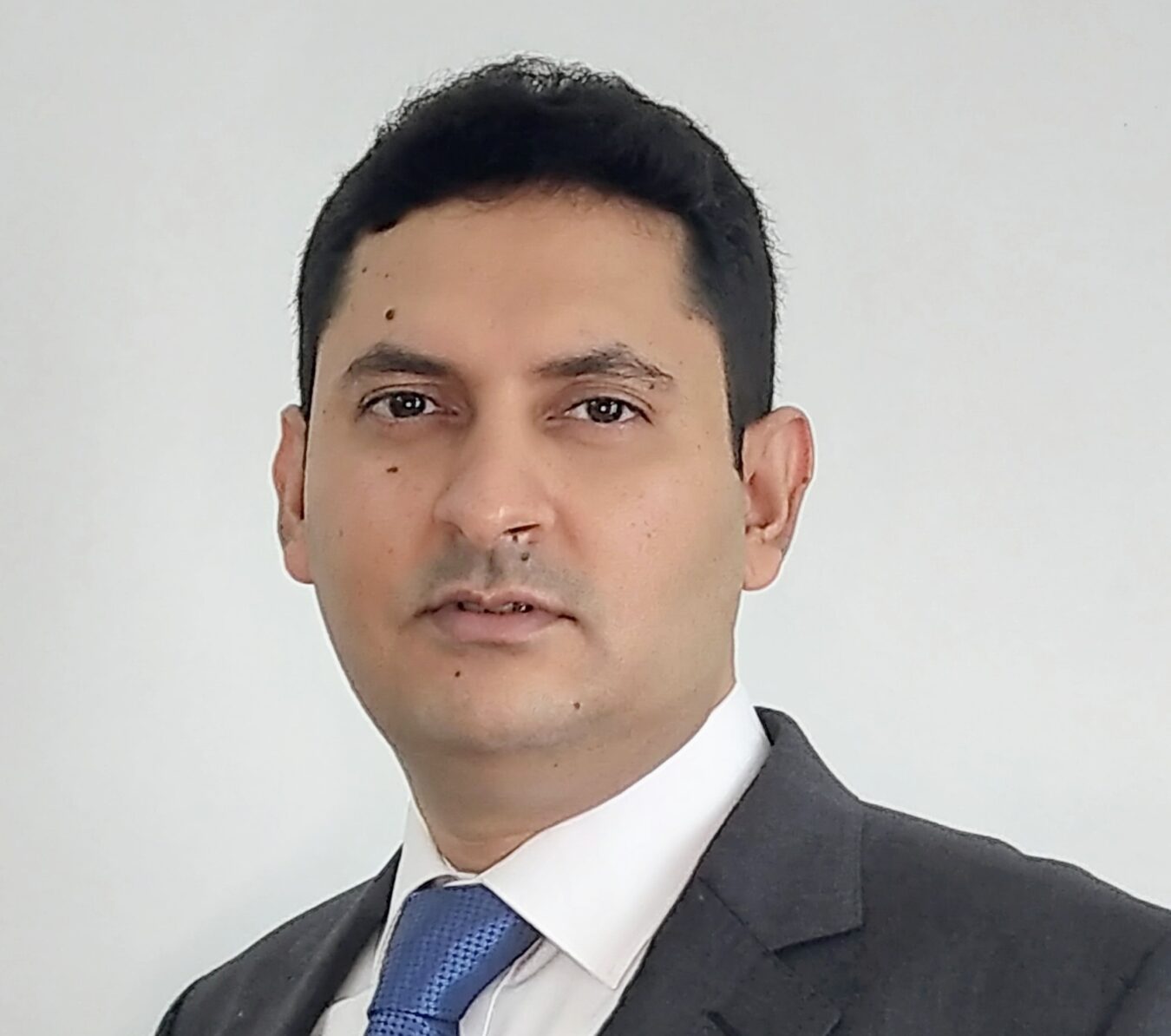Alum Ventures: Hourly-Fee Financial Planner – Avinash Luthria, PGP 2002
Avinash Luthria is Founder, Hourly-Fee Financial Planner & SEBI Registered Investment Adviser (RIA) at Fiduciaries.in . He was previously a senior Private Equity investor for 12 years ( LinkedIn profile ). He is the only Hourly-Fee Financial Planner in India and is probably the second Hourly-Fee Financial Planner in the world (this is based on a strict definition of the term provided at HourlyFee.org). He founded Fiduciaries.in in 2018, and he focuses on clients who are knowledgeable about personal finance and investing, including but not limited to a few clients who are Private Equity & Venture Capital fund managers and / or MBAs in Finance from top IIMs. He writes about financial planning & investing in Business Standard, Mint, The Ken etc .
What does SEBI RIA mean?

The big picture problem is that almost all of us are at a high risk of running out of money during retirement. There are many reasons for this including people getting very poor-quality advice and paying very high fees on investment products. In this context, Securities and Exchange Board of India (SEBI) recognized a long time back that Mutual Fund Distributors (MFDs) earn absurdly high commissions. MFDs can be corporates (which may or may not be banks) or individuals. Typically, around 2% of the client’s investment is deducted each year by the Mutual Fund (MF) and the MF house keeps 1% and passes on 1% to the MFD as a sales commission. Most clients do not realize that they are being charged a sales commission every year. I wrote in 2019 that this amounts to Rs 15,000 crores of MF commissions each year (this article in The Ken is behind a paywall). The commission of 1% per annum (p.a.) eats up 26% of the client’s investment over a period of 30 years. Most people do not realize that the cumulative impact is so large and devastating. Further, since the commission is higher on equity MFs than debt (fixed-income) MFs, MFDs typically recommend that their clients invest primarily in equity MFs. So, it was absurd that MFDs were advising clients on such life-and-death decisions.
So, in 2013, SEBI made two landmark changes that are partially interconnected. First, SEBI insisted that it should be possible for clients to invest in every single MF by themselves, without involving an MFD (or any intermediary) and on such investments, clients should not be charged any annual commission. Second, SEBI allowed individuals and companies to register with SEBI as Registered Investment Advisers (RIAs). SEBI’s RIA regulations say that RIAs should put the client’s interests above the RIA’s own interest (a trivially small number of RIAs actually follow this). To enable this, RIAs do not earn any commission nor referral fee and are directly paid by clients. Further, SEBI said that only RIAs can offer financial planning services and investment advice (e.g. asset allocation) and MFDs cannot offer such services. But most MFDs illegally offer such services.
What does Hourly-Fee Financial Planner mean?
A transparent fee structure is critically important to minimize conflict of interest in financial planning and investment advice.
Most RIAs in India charge clients 1% p.a. of the client’s Assets Under Management (AUM). So just like the MFDs, such RIAs are taking away 26% of the client’s investment / net worth over 30 years. This causes massive conflicts of interest and I have written about this in detail in an article in Mint . For example, such RIAs discourage the prepayment of a home loan.
A few other RIAs pioneered charging clients a Fixed-Fee which typically was an extremely low fee. This is a significant improvement in the transparency of the fee structure. However, such RIAs did not disclose the number of hours of effort. And as explained in the same article, this lack of transparency resulted in most (but not all) such RIAs minimizing the number of hours of effort. Hence the only output of such an engagement was a financial plan document. This is useful for Lower-Middle-Class clients but is too superficial and useless for Upper-Middle-Class clients.
An Hourly-Fee Financial Planner discloses both the Fixed-Fee as well as the Hourly-Fee and hence also discloses the number of hours of effort. This is the world-wide gold standard of transparency in financial planning and investment advice. This is similar to how other professionals such as lawyers and doctors charge their clients. As an illustration, an Hourly-Fee Financial Planner with significant credentials may charge fees of Rs 10,000 per hour of effort multiplied by 12 hours of effort in the first year of the engagement and 3 hours of effort in subsequent years of the engagement, if and when the client feels the need to renew the engagement.
Simplistically, a Financial Planner recommends how much a client should be saving for retirement; what proportion of their net worth they should put in equity vs. fixed income; and what products they should use. During that process the Financial Planner tries to uncover some blunder that the client is making and tries to convince the client to stop making that blunder. Some examples of blunders are saving too little for retirement (my article in Mint which explains that post-tax post-inflation returns will be in the ballpark of zero percent), allocating too much to equity based on the myth that equity is safe in the long term (my article in Mint) and using Active MFs, since on the average Active MFs are unable to beat a low-fee Passive Index Fund in India (my article in Business Standard).
Why does your business model permanently involve not having any team members?
Since I focus on clients who are knowledgeable about personal finance (including fund managers), it is not possible for me to have team members. And this is true for all five Hourly-Fee Financial Planners in the US (there are most likely zero Hourly-Fee Financial Planners in the UK and Canada).
Further, Hourly-Fee Financial Planners typically operate as professionals and put the client’s interests above the RIA’s own interests. For example, such an RIA will not sign up a client who wants to sign up with the RIA without realizing that the particular client would be better off signing up with another RIA (for example, another RIA who has a lower Hourly-Fee). Hence, my website recommends two other RIAs who charge lower fees. None of the 6 Hourly-Fee Financial Planners in the world have figured out how to ensure that their organization will continue to follow this approach even after they retire / die. It is simpler to let clients know in advance that in such a situation they should contact another exceptional RIA X and / or RIA Y.
The ideal way for this profession to grow is for there to be many financial planners who are also entrepreneurs and permanently do not have any team members.
Do you have any suggestions about entrepreneurship?
I had written in VCCircle that on the average, entrepreneurs will earn less than they would in a job, so one should think that through before becoming an entrepreneur. That article provides an illustration of a 40-year-old who should have a net worth equal to at least 25 times his / her annual expenses before becoming an entrepreneur. Further, many businesses find legal but unethical ways to con their clients / customers or vendors or employees or someone else. Crypto exchanges are one such recent example (my article in Business Standard) and there are such examples in every single sector of the economy. If an entrepreneur decides that he / she would not like to do that, then they will earn even less, and they should think that through before they quit their job to become an entrepreneur.
What memories does the mention of IIMB bring back?
What I learnt from Professors R Srinivasan (Finance), V Nagadevara (Statistics) and J Ramachandran (Strategy) helped me when I was a Private Equity investor. And it continues to help me now in my work, which is primarily investment research and secondarily identifying what blunder a particular client is making and how to fix it. I also have very fond memories of several professors including but not limited to Professors Janat Shah (Operations Management) and P N Thirunarayana (who taught me Negotiations).


